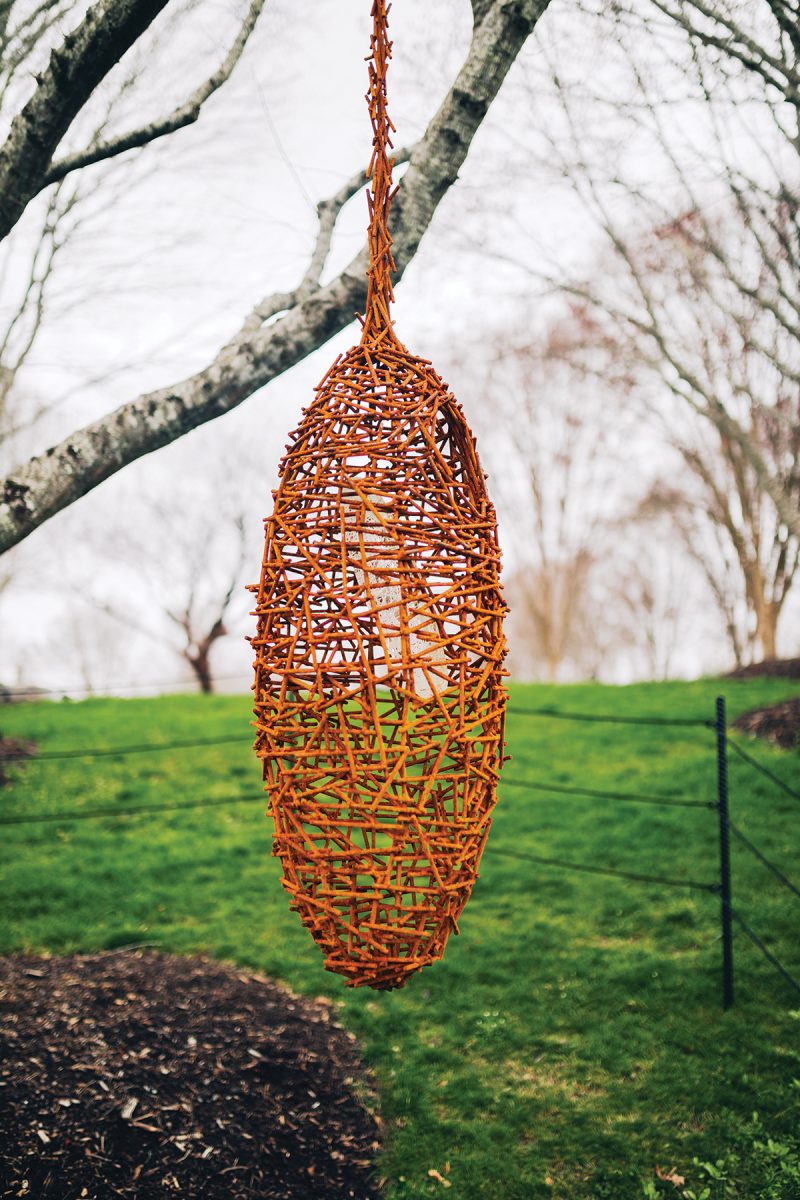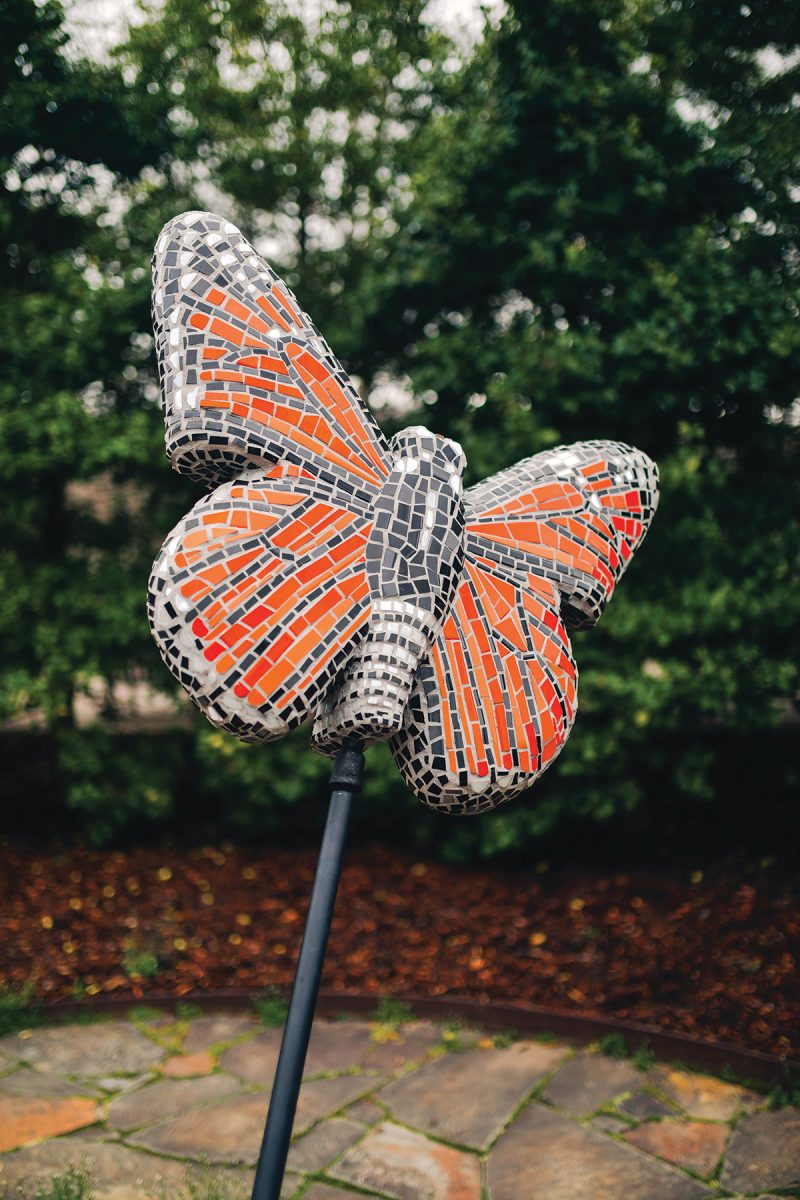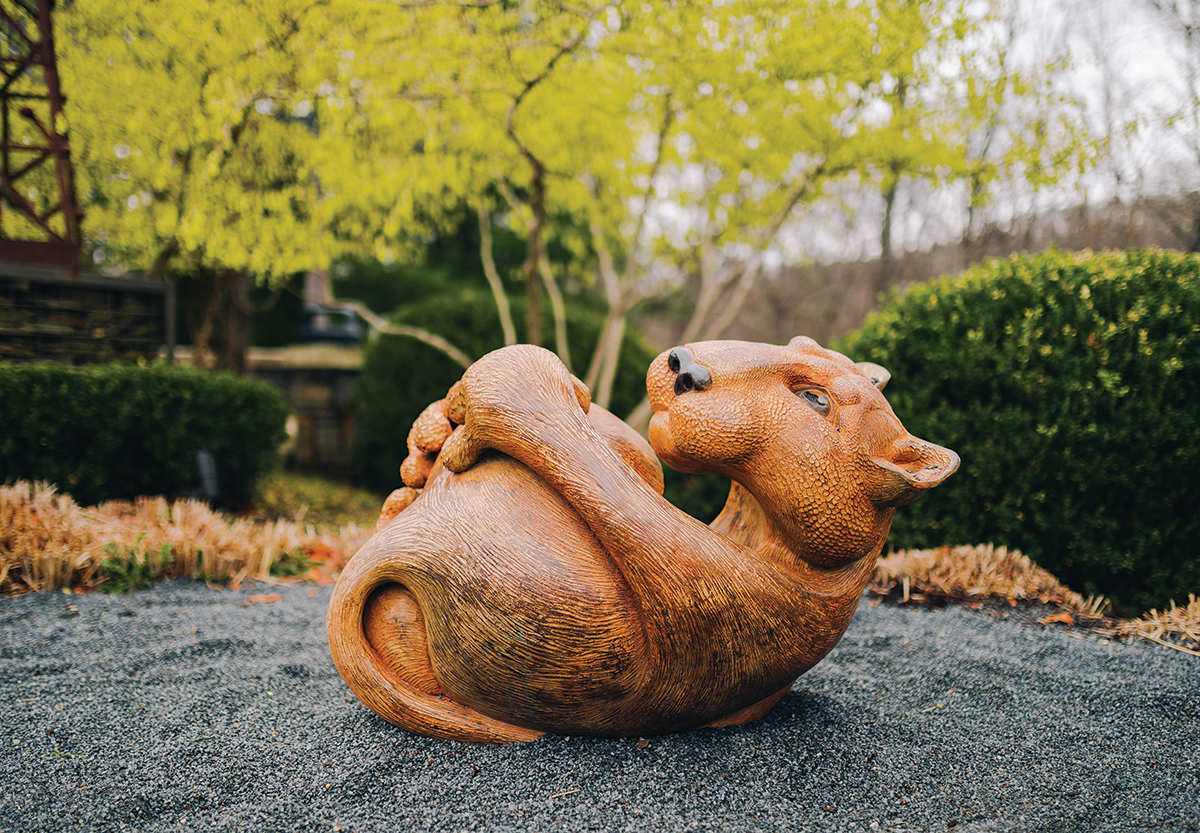Outdoor exhibit heralds the warmth of the new season

Photo by Rachel Pressley
The Luna moth is elusive. As its name suggests, the winged insect only flies at night, disappearing into the shadows of hickory and sweetgum trees during its fleeting seven days on earth.
Linda Pannullo spotted her first and possibly last Luna moth 24 years ago, when she lived in Tennessee.
“I was struck by the moth’s beauty,” says Pannullo, a mosaic artist now living in Asheville. “Luna moths are endangered because of habitat loss and pesticides, but their lifespans are also very short. When they hatch from the cocoon, they don’t have a mouth. They live for about a week just to mate and start the process all over again.”
Pannullo is one of 16 artists represented in the North Carolina Arboretum’s Wild Art outdoor sculpture showcase, an 18-piece art exhibit honoring all things flora and fauna. (She is also the first mosaic sculpture artist to be featured at the Arboretum.)

Photo by Rachel Pressley
Her piece, Two Butterflies and a Moth, features a Monarch and Eastern Tiger Swallowtail butterfly and a Luna moth. Made from foam, a concrete slurry, and tile mounted on stands welded at Asheville-Buncombe Technical Community College, each sculpture is about two feet tall and 40 pounds. They will be on display in the Arboretum’s main gardens through September.
Clara Curtis, senior director for mission delivery at the Arboretum, who helped develop Wild Art, says the showcase complements a concurrent indoor exhibit. Also opening this month, A Life in the Wild features a collection of 40 photographs from Thomas D. Mangelsen, a famed wildlife photographer and conservationist.

Photo by Rachel Pressley
“We’ve had it on our hearts and minds to have another garden-wide sculpture show since our last show in 2008,” says Curtis. “We used the indoor exhibit as an opportunity— as a jumping-off point.”
The resulting lineup — a mix of wood, bronze, glass, and steel sculptures — is certainly wild. Eli Blasko’s sculpture, for instance, looks like a snake at first glance. But step closer, and you see that Tributary is not easily defined by one single creature.
“It evokes the flowing lines of nature,” says Blasko, an art instructor at Western Carolina University. “When I commute to Western, I drive along the Tuckasegee River and several of its tributaries. I found myself thinking about the river a lot. It became my vehicle for the piece.”

Photo by Rachel Pressley
Sanctuary, a work by Black Mountain sculptor Julia Burr and Asheville glass artist John Almaguer, is a steel nest suspended from an ironwood tree. Inside the nest —which resembles the gargantuan dwellings built by the weaverbirds of Africa — is a cylindrical piece of blown and carved glass. The juxtaposition of materials is striking.
“Here is this rough, rusted steel thing on the outside and this pristine, exquisite thing on the inside,” Burr says. “The whole concept is that nature holds the key. The glass represents that key, that essence, that beauty.”
For Pannullo, the beauty of nature is represented by something less discernible — a silvery-green shadow that flutters in the night.
“A lot of times moths are overlooked because they’re not as flashy as butterflies,” she says. “But the Luna moth is beautiful in its own right.”
The Wild Art outdoor sculpture showcase will be on view April 1 to September 26 at the North Carolina Arboretum (100 Frederick Law Olmsted Way, Asheville) during normal Arboretum hours (8am-7pm). No additional cost to visitors beyond the Arboretum’s usual parking fee of $16 per personal vehicle for nonmembers. For more information, visit ncarboretum.org.
